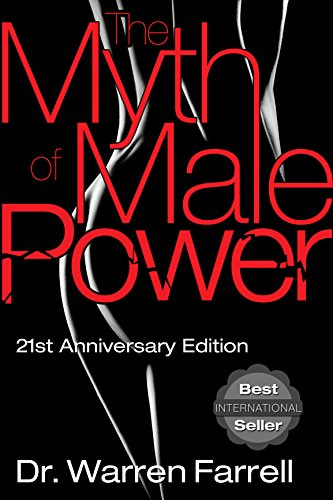A Letter to Columnist Andrew Van Dam on His Article About “Men Finally Doing Their Share of Housework”
Saying that "men are FINALLY doing their share of housework" is clear evidence of Van Dam's own feminist indoctrination
Dear Mr. Van Dam,
I respectfully ask that you take the time to read this letter about your recent article in The Washington Post, The real reason American men are finally doing more chores.
As a brief introduction, I’ve been a lifelong reader of the Post who has long noticed the paper’s feminist bias, provable by its imbalanced coverage of domestic violence1 and made undeniable by its 2018 publication of the op-ed Why can't we hate men? Since then, I’ve been sending letters to Post columnists who have written articles that perpetuate this bias.
While your article doesn’t come close to the undeniable gender bigotry of 2018’s “Why can’t we hate men?” op-ed, it’s a provable example of the kind of one-sided, feminist worldview that is so prevalent not only the Washington Post, but throughout most of Western media.
So, how is it “provable”? It’s right in your article’s title:
“… finally doing more chores”.
That single word, finally, in the title proves both your gender bias, and your ignorance about the “other side” to the myth of a “gender housework gap”.
There is abundant, readily available evidence that has been ignored for decades by both feminists and a gullible media (The Washington Post, CNN, The New York Times, are among the worst offenders). For example:
In his book The Myth of Male Power, Warren Farrell reports on studies that show that it is men, and not women, who contribute most to the marriage work load:
“The media popularizes studies reporting women’s greater amount of time spent on housework and child care, concluding, “Women work two jobs; men work one.” But this is misleading. Women do work more hours inside the home, but men work more hours outside the home. And the average man commutes farther and spends more time doing yardwork, repairs, painting. . . . What happens when all of these are combined? [A] University of Michigan’s study (reported in the Journal of Economic Literature in 1991) found the average man worked sixty-one hours per week, the average woman fifty-six.2 Is this just a recent change in men? No. In 1975, the largest nationwide probability sampling of households found that when all child care, all housework, all work outside the home, commuting, and gardening were added together, husbands did 53 percent of the total work, wives 47 percent.”3
In another must-read book, The Privileged Sex, Israeli military historian Martin van Creveld, in the “Men, Women, and Work” chapter references multiple studies that dispel the myth of male slacking in the home:
“The usual reason given for women’s shorter hours is the famous double burden. However, upon closer inspection, this well-worn argument falls apart.4 To be sure, women who do not hold a job spend more time doing housework than do their spouses, but this is only part of the story. Contrary to conventional wisdom, it is simply not true that working mothers devote much more time to childcare than do working fathers. Since many children from the age of 6 months up spend much of their time outside the home, looking after them only takes up a tiny fraction of a woman’s adult life. The smaller the family, the truer this is. Depending on whether they work part time or full time, mothers in developed countries are said to devote 1-4 percent of total available time to childcare, compared to 2-3 percent for fathers. So limited is the time academic mothers spend raising their children that they actually outperform their colleagues who have never given birth.”5
Before you again provide analysis of data about other gender issues (e.g., your possible future column about “household tasks related to child care”), you really need to examine how distorted the feminist depiction of a gender housework gap truly is.
You could start by reviewing my short examination on the subject, The Division of Labor in American Marriages, which shows how:
Many surveys about housework misrepresent or even ignore facts:
“Who does more housework, men or women? There are many informal surveys and also a large academic literature on the subject. Care is needed because many surveys are clearly skewed.”
Feminists ignore inconvenient facts that don’t support their worldview:
“When comparing combined work both inside and outside the home, the average man worked sixty-one hours per week, the average woman fifty-six”
Feminists often exclude traditionally male jobs:
“Other activities such as home repairs, mowing the lawn, and shoveling snow were not in the study. ‘Items such as gardening are usually viewed as more enjoyable; the focus here is on core housework’.”
Men are often automatically assigned by wives the “icky”, traditionally male jobs like taking out the trash
Much of “inside work” done by wives is “non-essential”, while “outside work” done by husbands is “essential”
Mr. Van Dam, it’s clear that you and many of your associates at the Washington Post are mostly clueless about what feminism has become, about feminism’s dark side. If I may suggest, to learn more you might want to start by reading my letter to Christine Emba in response to her July 2023 “Men are lost” article.
My letter includes discussion of how feminism: is founded on lies, has become a hate movement, propagates “idiot hypocrisy” by telling obvious falsehoods, and briefly describes the damage caused by six decades of feminist lies and indoctrination.
Please do take the time to read my letter to Ms. Emba.
Sincerely,
Stephen Bond,
Publisher of "Letters to The Washington Post" Substack
My observation was confirmed by a February 2023 report by The Coalition to End Domestic Violence that described a 10-Year Suppression of the Truth on Domestic Violence by the Washington Post.
F. Thomas Juster and Frank P. Stafford, “The Allocation of Time: Empirical Findings, Behavioral Models, and Problems of Measurement,” Journal of Economic Literature, vol. 29, June 1991, p. 477.
Martha Hill, Patterns of Time Use in Time, Goods, and Well-Being (Ann Arbor: Institute for Social Research, University of Michigan, 1985), ed. F. Thomas Juster and Frank P. Stafford. See also Joseph H. Pleck, Working Wives/ Working Husbands (Beverly Hills: Sage Publications, 1985), p. 41, table 2.3.
Katherine Hakim, Key Issues in Women's Work: Female Heterogeneity and the Polarisation of Women's Employment, London, Athlone, 1996, pp. 52, 203.
Virginia Valian, Why So Slow? The Advancement of Women, Cambridge, MA, MIT Press, 1999, p. 270.





